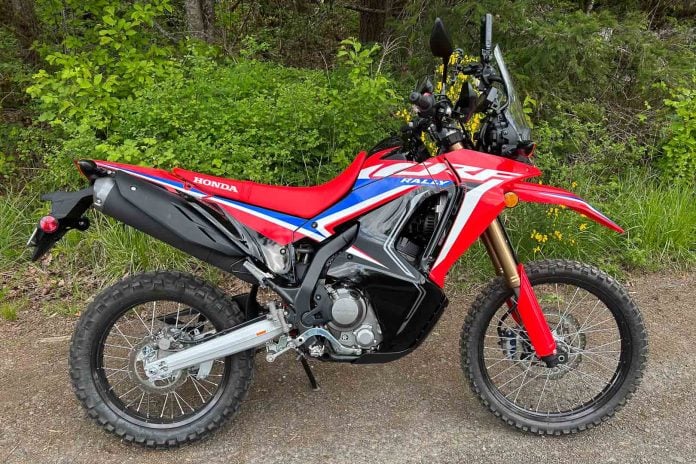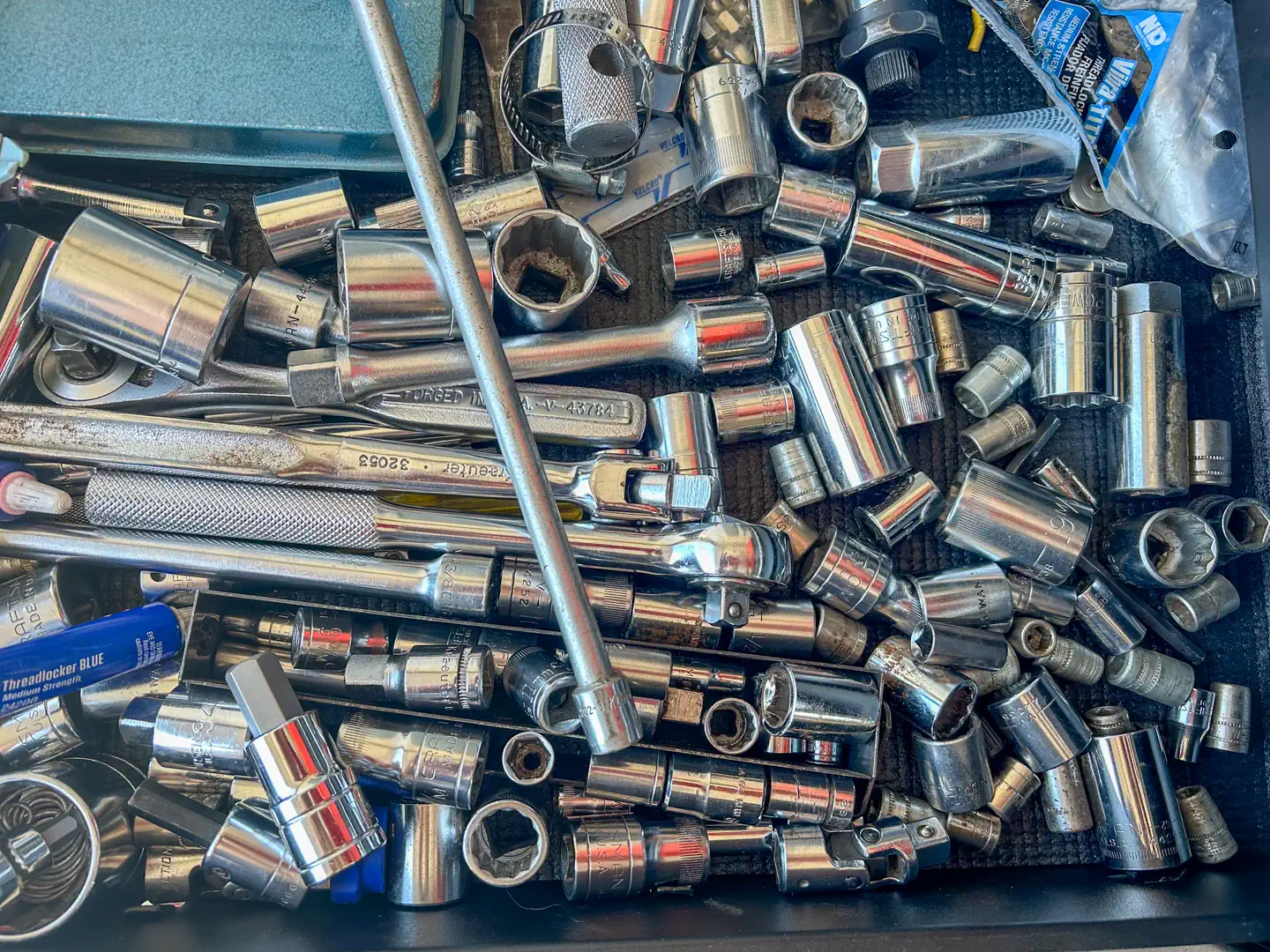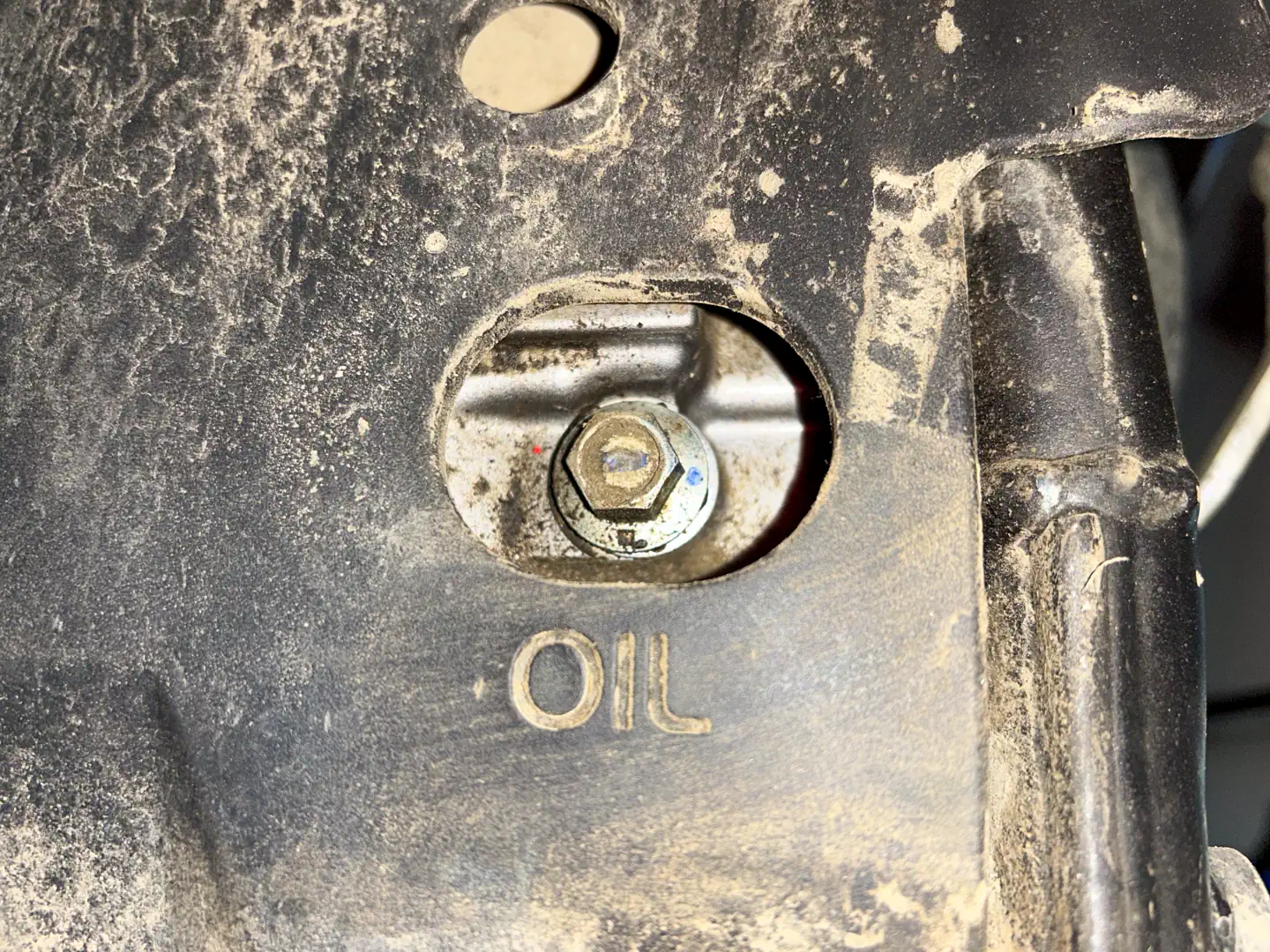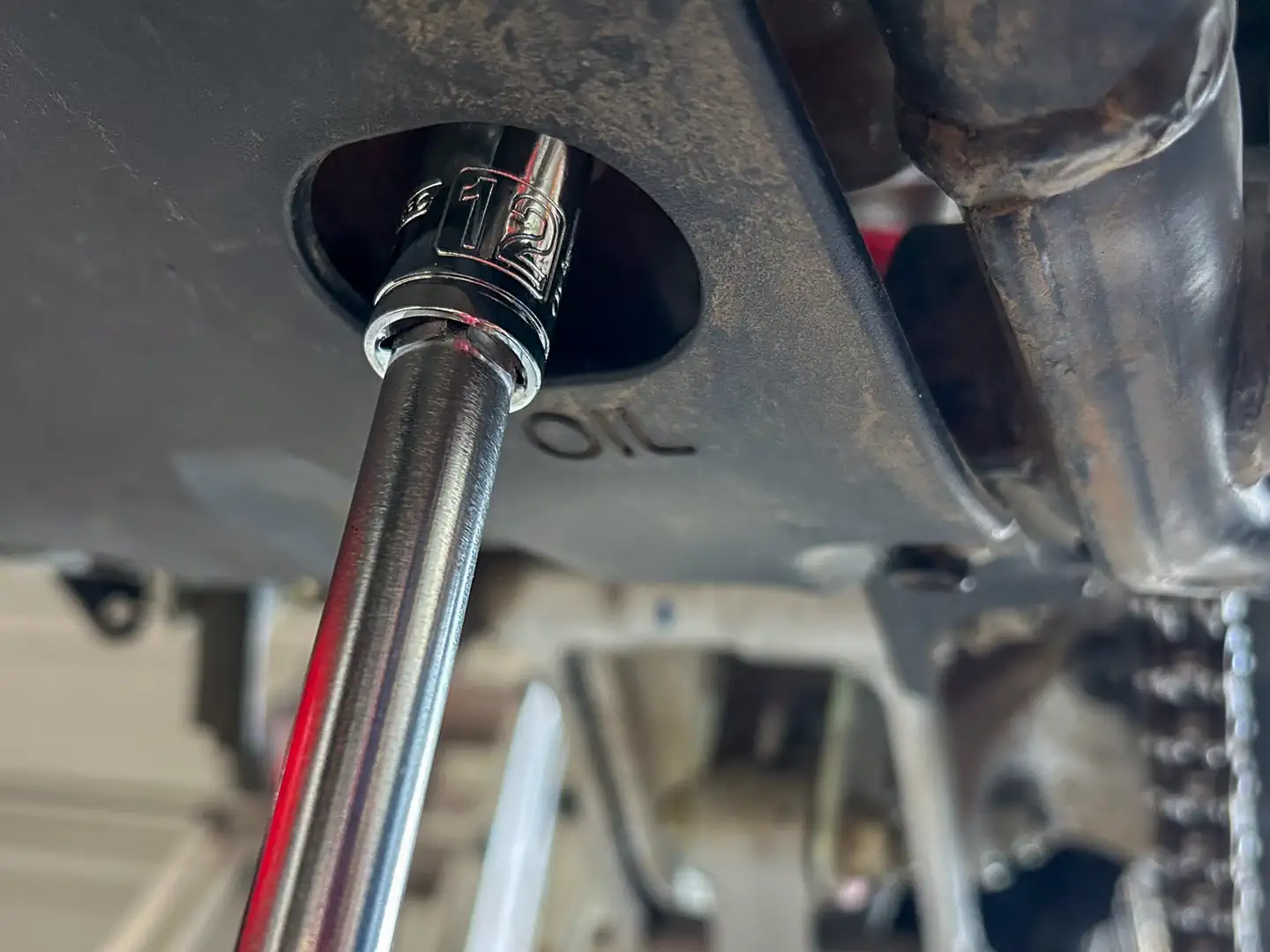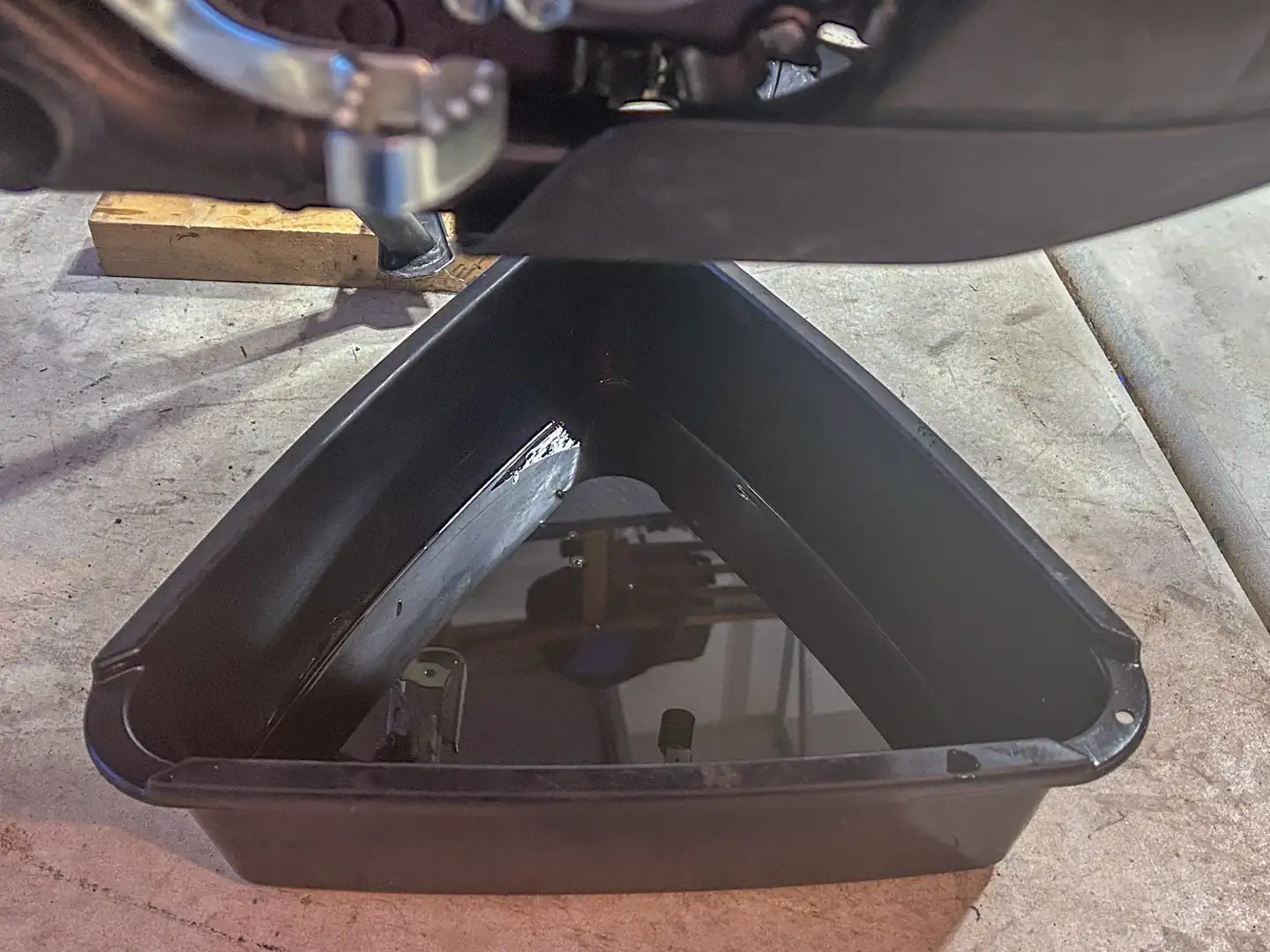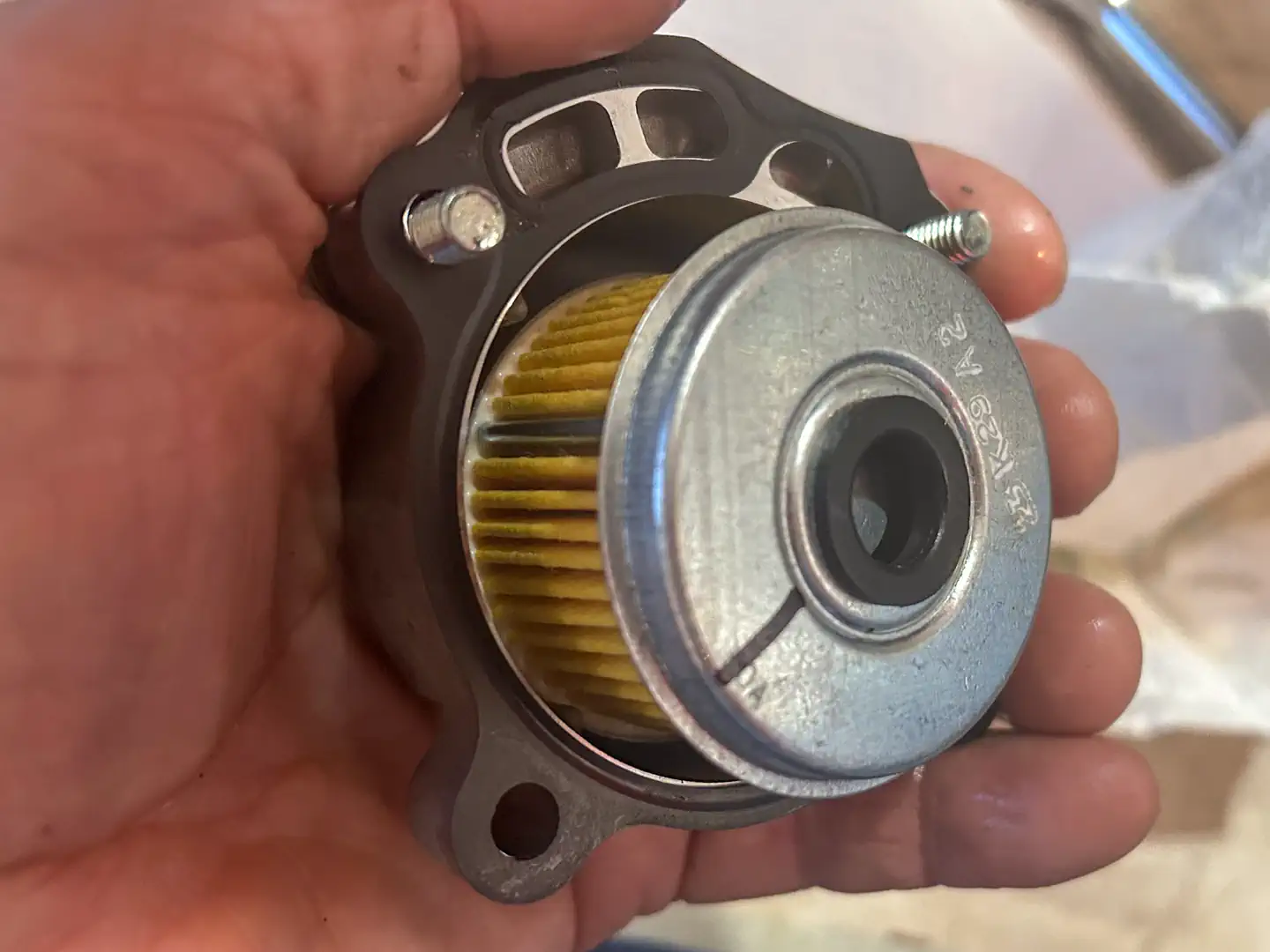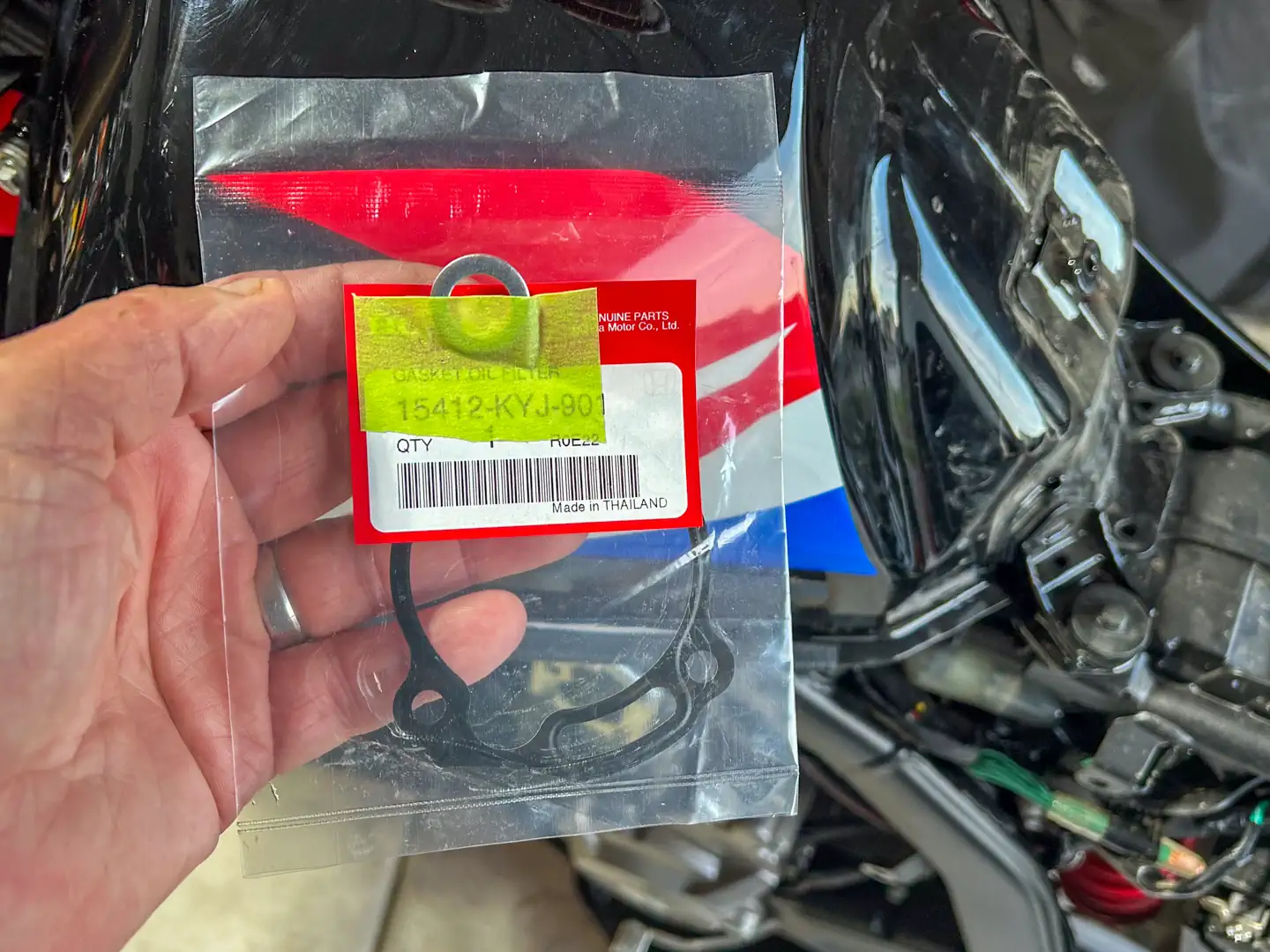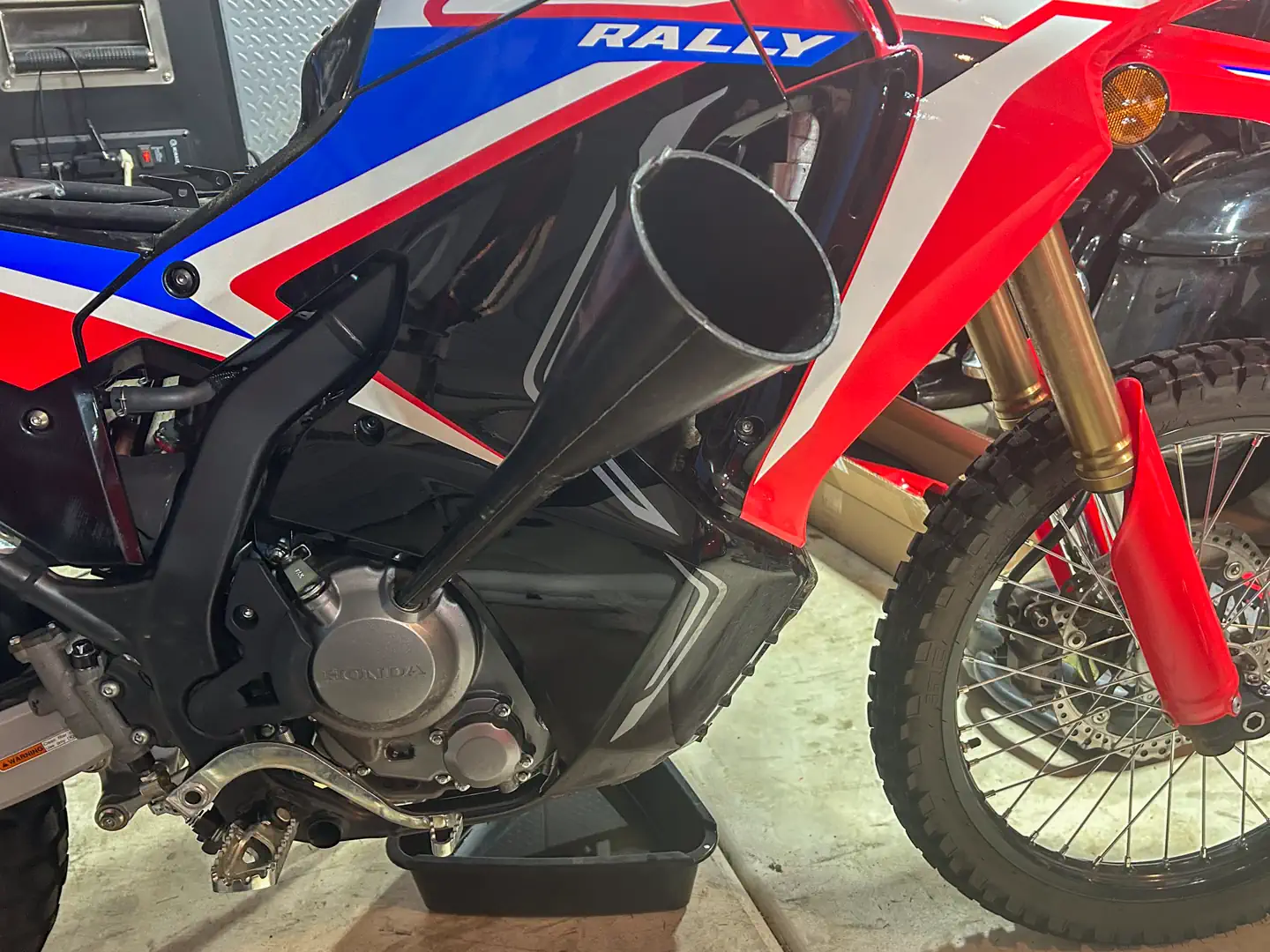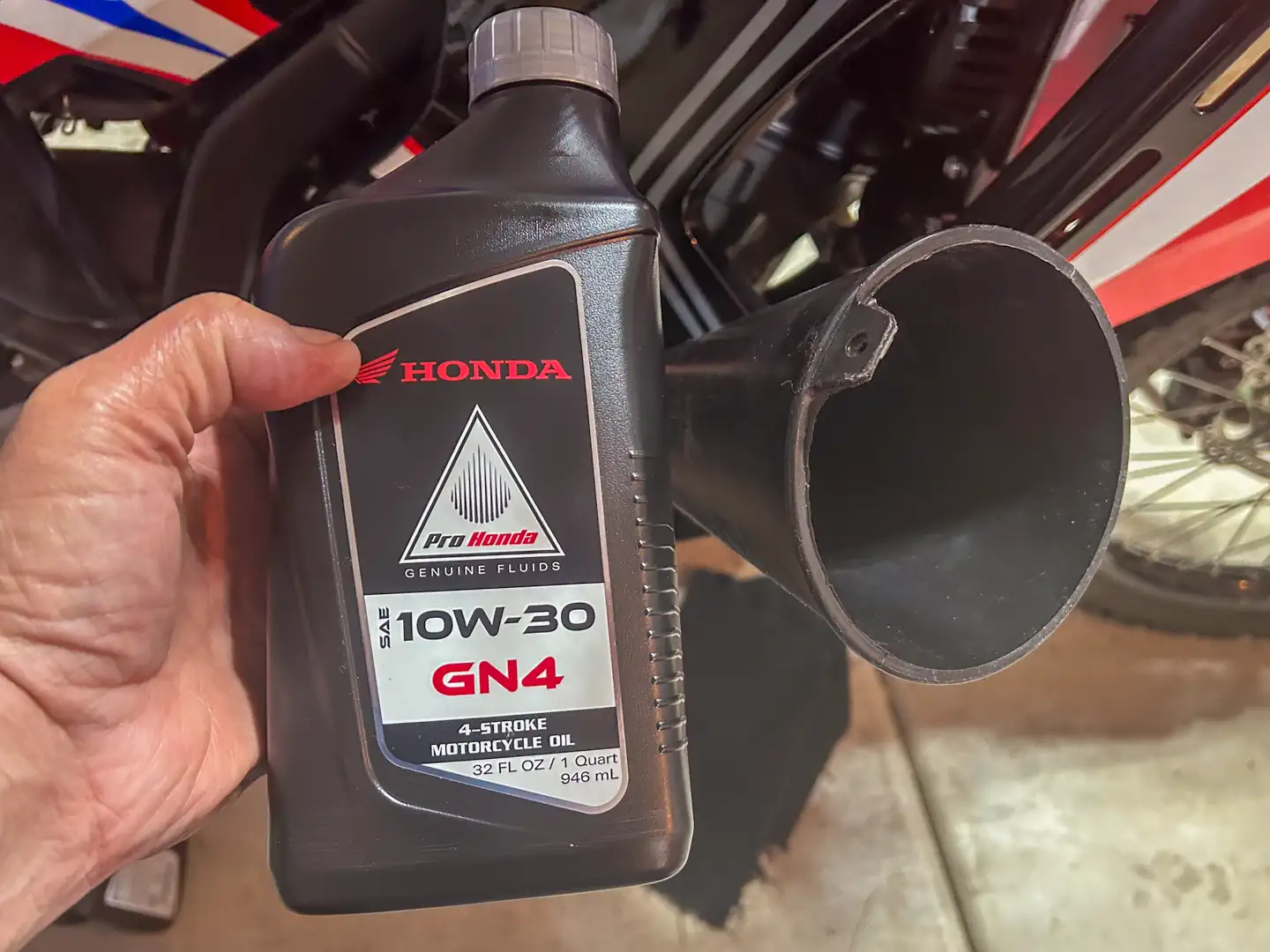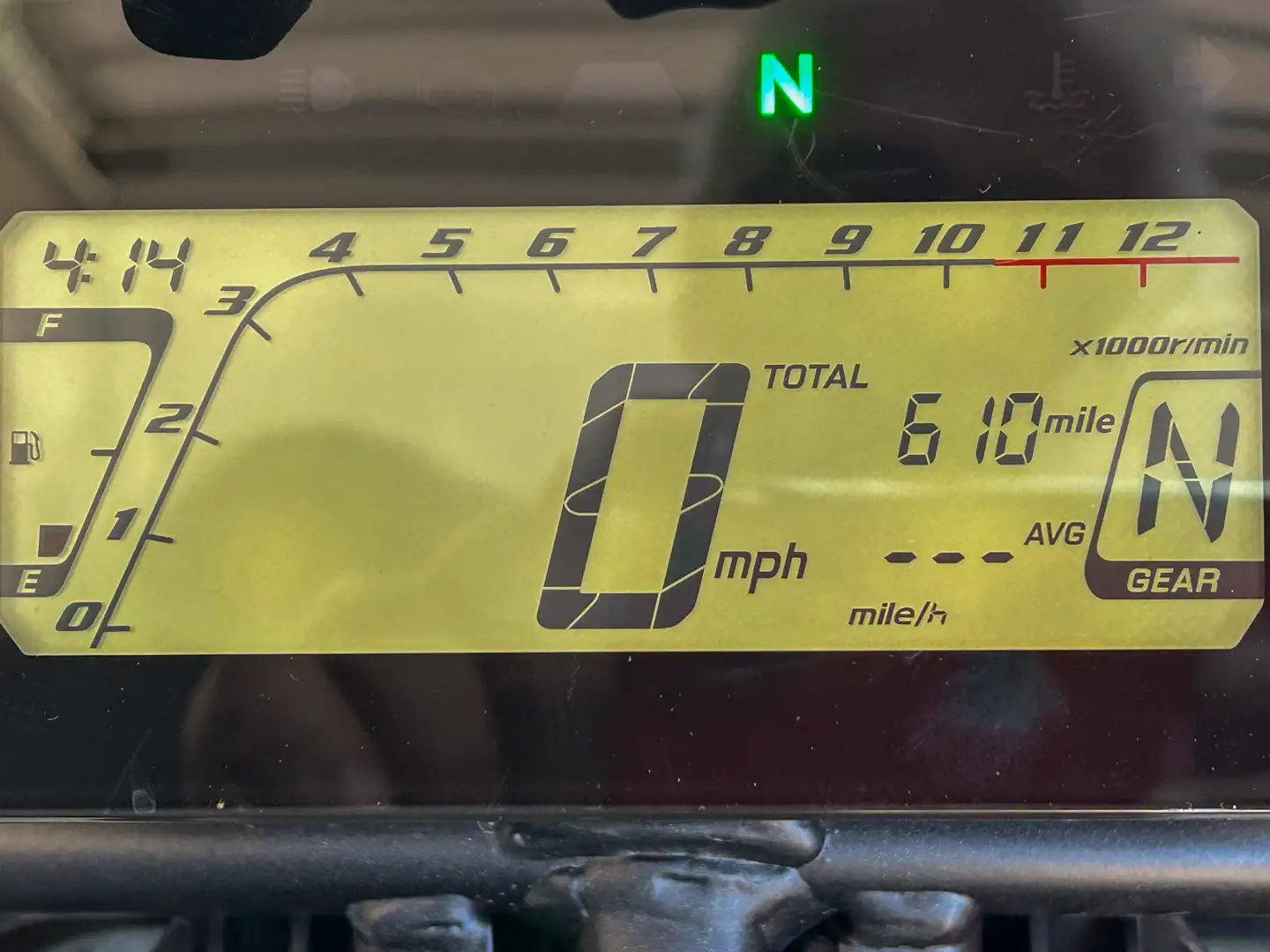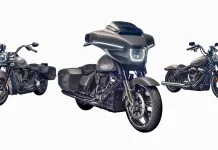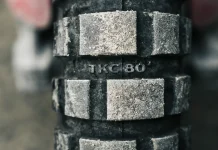It’s almost hard to believe that after the first oil change at 600 miles on the Ultimate Motorcycling Honda CRF300L Rally Project Bike, the next recommended one isn’t until 7,400 miles later. Embarrassingly, it took me longer to find my 8mm socket for the oil filter cover bolts than it did to perform the oil change.
Now that I’ve marked that socket for easy recognition, I’m almost looking forward to the next one. I see those 7,400 miles as opportunities—rides I used to avoid because I was worried about dropping the now-completed 500-pound Yamaha Ténéré 700 Project Bike. Interestingly, the 331-pound Honda CRF300L Rally makes more of a tink than its predecessor’s thunk when I drop it.
While I don’t want to dissuade anyone from bringing a bike to a Honda dealer for its first oil change, this really is beginner-level wrenching for under $50 for all the Honda parts. The hardest part is keeping your garage floor safe from dirty oil droplets.
There’s no guessing where the oil drain plug is—it’s clearly marked “OIL” on the skid plate. If you ride off-pavement, you’re probably already carrying tools, and a 12mm socket should be in that kit for the drain plug. If you place a block of wood or a brick under the kickstand, the bike will stand almost vertical, but not tippy.
Unscrew the plastic oil fill plug on the right side of the engine. Then, when you remove the drain bolt, the oil will pour straight out of the big hole and into your strategically placed catch basin.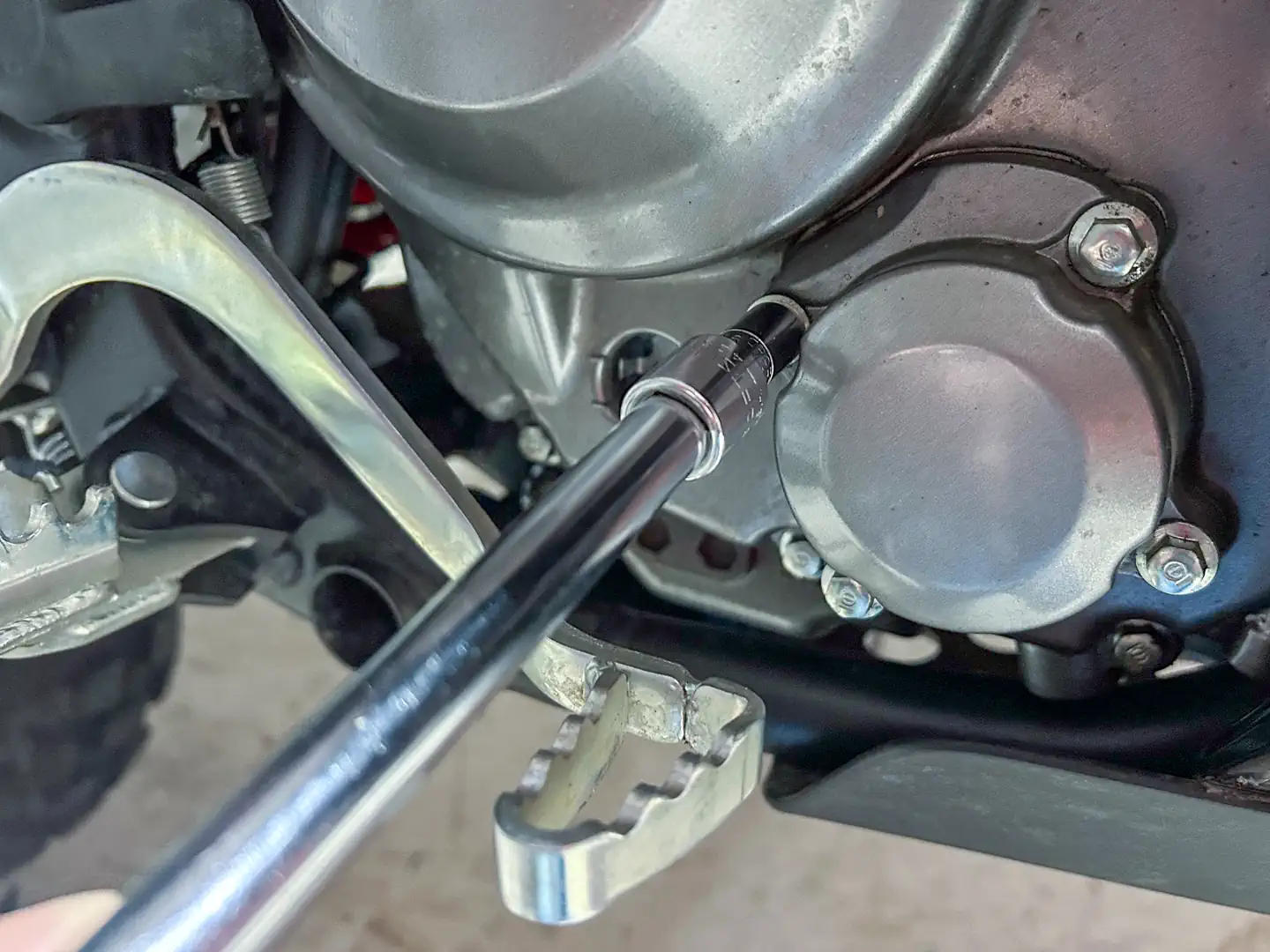
For a cleaner job, take off the skid plate to gain open access to the bottom of the engine. Wipe the rim of the hole once the oil has stopped dripping, then reinsert the drain bolt with a new crush washer. Here’s the important part—don’t overtighten it. You can strip the threads in the aluminum oil pan. Honda has a torque spec, but for those of us from the old school, one ugga dugga is enough.
Once the drain plug is back in, use a cross pattern to remove the four 8mm bolts that secure the filter cover. As you loosen them, the cover will feel springy—there’s a spring behind it, so don’t lose it. Remove the old oil filter and the black gasket.
Wipe everything clean and position the new gasket. The cutouts make the alignment a no-brainer. Install the new filter with the hole and rubber seal facing the engine. Position the spring in the detent of the cover, then push and hold everything in place as you start threading in the four bolts.
If the cover doesn’t feel springy, the spring has moved. Start over—the spring must be in place, and the oil filter hole and gasket must sit against the engine.
Lightly tighten the bolts in a cross pattern and torque them to Honda’s spec. These bolts go into aluminum and can strip easily, so I used about half an ugga dugga on them.
If you did this yourself, then you are an optimist. Pour in 1.4 liters of Pro Honda GN4 4-Stroke Motor Oil 10W-30 and check the sight glass—the oil level should be centered in the window.
Start the engine and let it run for a few minutes while you check for leaks. If there are none, congratulations—you’ve done your first oil change. If you see leaks, don’t just tighten bolts—you could strip them. Stop and figure out what went wrong. Did you leave the old crush washer stuck to the engine, so now you have two stacked on top of each other? Did the old oil filter gasket stay in place, or is there now an additional one?
The Honda CRF300L Rally Project Bike’s first oil change is my trigger to start making improvements. For some, this bike will go from showroom to forest trails with no additions, subtractions, or changes. After spending four years customizing the Ultimate Motorcycling Yamaha Ténéré 700 Project Bike to fit my size, riding ability, stance, and comfort needs, I knew in the first 100 miles what I wanted to change on the CRF300L Rally.
The next review in this series will cover most of my planned upgrades, and each one will get its own follow-up. Adventure biking is great fun, and exploring new parts that make the Honda CRF300L Rally even better is fun too, and that is what this Project Bike is all about.


